In the swiftly evolving landscape of video camera technology, staying at the forefront has never been more crucial. From the earliest days of bulky, stationary units to today’s sleek, feature-packed models that cater to a spectrum of filming needs, the journey has been remarkable. This evolution has not only expanded creative boundaries for users but also opened a vast arena of opportunities for those in the business of equipping professionals and enthusiasts alike. Understanding the intricacies of these advancements and their implications on user preferences is key to curating a selection that meets the nuanced demands of a diverse clientele, ensuring that your offerings resonate well with the needs of the day and keep your business ahead in a competitive market.
Table of Contents
1. Understanding video camera types and their uses
2. Analyzing the video camera market in 2024
3. Leading video camera models of 2024
4. Expert advice for choosing the right video cameras
1. Understanding video camera types and their uses
The video camera market caters to a wide array of users, from casual hobbyists to professional filmmakers, each seeking the perfect tool to capture their vision. As technology evolves, so does the diversity and capability of video cameras, splitting into several categories each designed for specific use cases.
Compact digital cameras
Ideal for those just stepping into the world of video, compact digital cameras offer a balance between ease of use and the ability to produce quality videos. These cameras are characterized by their fixed lenses and small, portable designs, making them perfect for everyday capture. Despite their simplicity, they often house impressive features such as high-resolution video capabilities and built-in stabilization, though they may lack the advanced controls and sensor size of their more professional counterparts.
DSLR cameras
DSLRs have long been the choice for enthusiasts and professionals alike, valued for their versatility in both photography and videography. With large sensors and interchangeable lenses, DSLRs provide superior image quality and depth of field, allowing for more creative control over the final product. Key specifications include full HD to 4K video recording, extensive manual controls, and robust build quality. However, their larger size and complexity can be daunting for beginners.
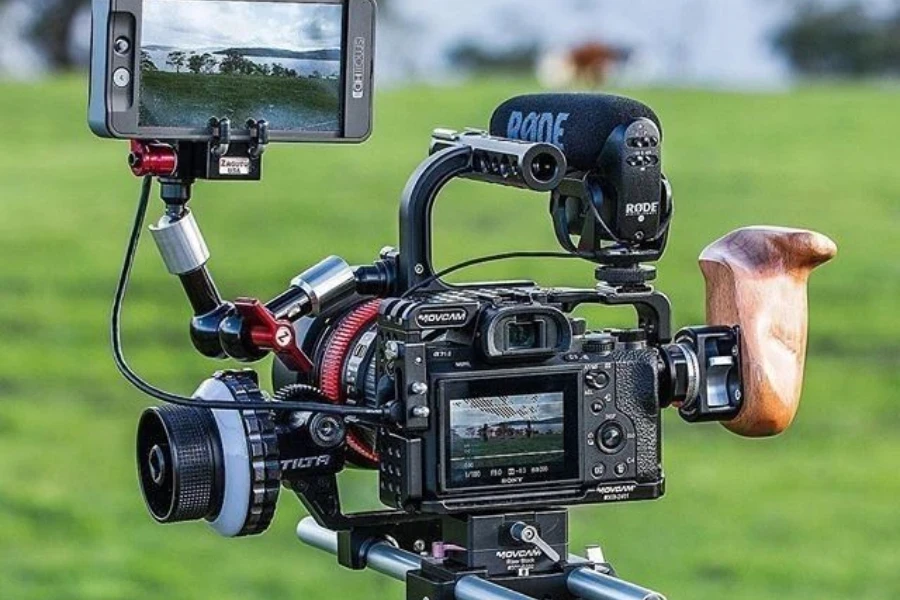
Mirrorless cameras
Mirrorless cameras have surged in popularity, offering many of the benefits of DSLRs but in a more compact and lightweight package. Without the mirror mechanism of DSLRs, mirrorless cameras can shoot more silently and offer faster shooting speeds, with many models boasting advanced video features such as 4K recording and impressive autofocus systems. Their rise reflects a market shift towards high-quality, versatile cameras that are easier to carry and use on the go.
Action cameras
For adventurers and sports enthusiasts, action cameras provide durable, compact options capable of capturing high-speed activities in extreme conditions. These cameras are built to be waterproof, shockproof, and generally more robust than other types of video cameras. Leading brands in this category have pushed the envelope with features like 4K60 video recording, hyper-smooth stabilization, and voice control, ensuring no moment is missed, no matter the adrenaline level.
Cinema cameras
At the pinnacle of video camera technology stand cinema cameras, designed with professional filmmakers in mind. These cameras offer the highest quality video, often supporting resolutions up to 6K or even 8K, with extensive color grading capabilities, dynamic range, and sensor sizes. The investment in a cinema camera extends beyond the initial purchase, considering the need for additional accessories and post-production tools to fully realize their potential. However, for those looking to produce cinematic works, the investment can significantly elevate the quality and professionalism of the output.
Each category of video camera serves a unique segment of the market, from casual users looking for a simple shooting experience to professionals demanding the highest quality and control over their productions. Understanding the nuances of each type allows for informed decisions that align with the intended use and desired outcomes of the videographer, ensuring the chosen equipment meets and exceeds expectations.
2. Analyzing the video camera market in 2024
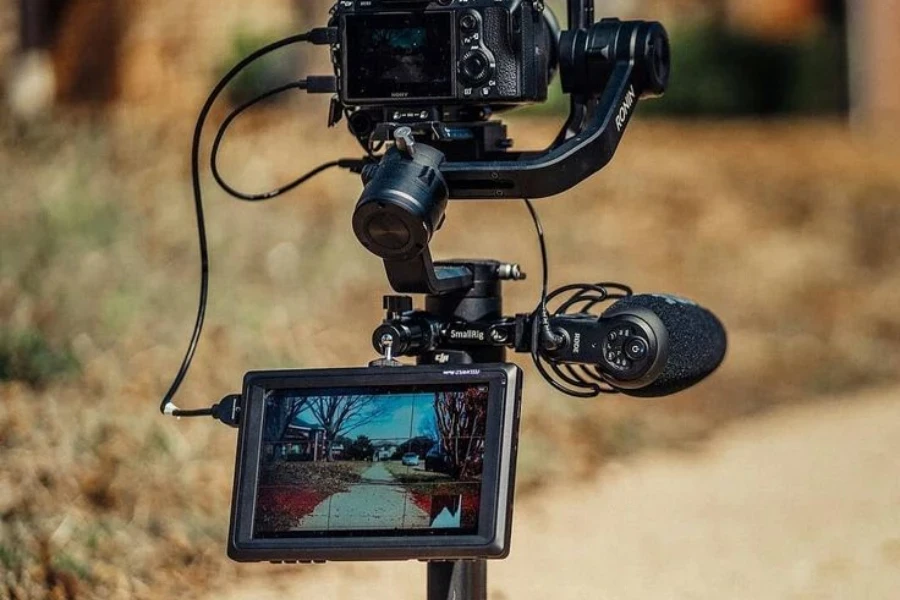
Experts currently value the global professional video camera market at US$ 35.38 billion as of 2022. Projected growth forecasts indicate the market is expected to reach US$ 43 billion by 2030, demonstrating a compound annual growth rate (CAGR) of 2.55% from 2023 to 2030. This expansion is underpinned by increasing demand for high-quality video content across various industries, coupled with rapid technological advancements in camera resolution and functionalities. North America stands as the market’s largest regional contributor, with expectations to reach US$ 16.28 billion by 2030.
Consumer trends and preferences
In 2024, the video camera market is witnessing a remarkable shift in consumer preferences and behaviors. Recent surveys and sales data highlight a growing demand for video cameras that offer both high-quality output and user-friendly features. Consumers increasingly favor devices that integrate seamlessly with various digital platforms, reflecting a trend towards content creation for social media and professional use. This year has also seen a surge in the popularity of cameras that offer versatility, such as mirrorless models that combine the quality of DSLR cameras with the portability of compact digital cameras. The preference for devices with advanced features like 4K video recording, live streaming capabilities, and AI-enhanced functionalities underscores the market’s move towards more sophisticated technology that caters to both amateur and professional videographers.
Technological advancements
Technological innovations are at the heart of the video camera market’s evolution in 2024. Breakthroughs in sensor technology have led to the development of cameras that perform exceptionally well in low-light conditions, a critical feature for filmmakers and photographers alike. Additionally, enhancements in image stabilization and autofocus mechanisms have improved the quality of video capture, making professional-grade videography more accessible to a broader audience. The integration of AI has revolutionized the way cameras operate, with features like subject tracking and automatic editing becoming standard. These advancements not only elevate the user experience but also open new possibilities in how video content is produced and consumed.
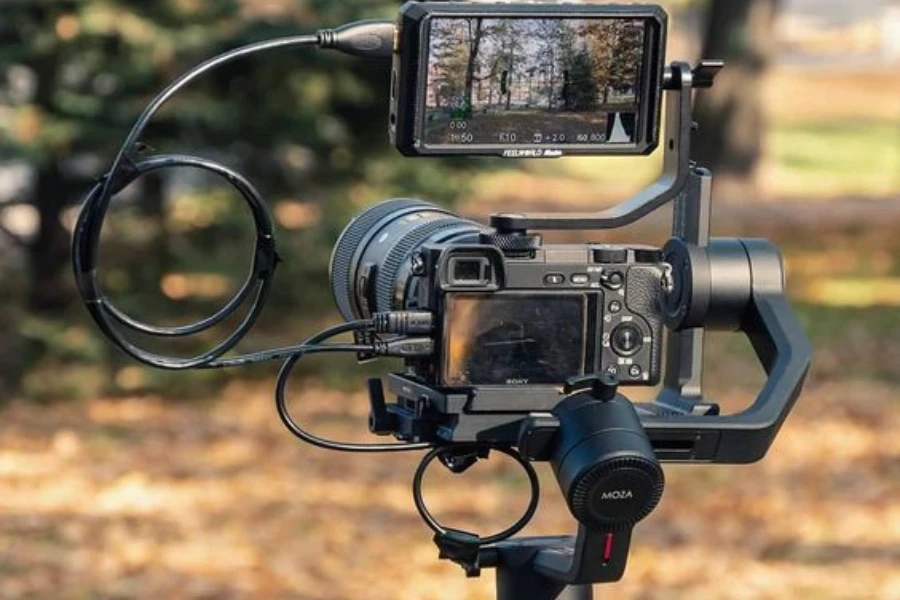
Impact of social media and content creation
The influence of social media platforms like YouTube and TikTok has significantly shaped the video camera market in 2024. As these platforms continue to dominate the digital landscape, the demand for cameras that cater to vloggers, influencers, and content creators has skyrocketed. Manufacturers are responding by designing cameras with built-in features tailored to content creation, such as vertical video support, built-in streaming capabilities, and connectivity options for easy sharing. The rise of video content as a primary form of communication and entertainment on social media has not only impacted consumer preferences but also pushed the industry towards continuous innovation to meet the evolving needs of content creators.
As we delve deeper into 2024, the video camera market is characterized by a dynamic interplay of consumer preferences, technological advancements, and the growing impact of social media on content creation. These elements collectively drive the development of video cameras, pushing manufacturers to innovate and adapt in a rapidly changing digital environment.
3. Leading video camera models of 2024
As the video camera market continues to evolve, 2024 has brought forward a range of models that stand out for their innovation, quality, and ability to meet the varied needs of both amateurs and professionals. This year, manufacturers have pushed the boundaries of what’s possible, introducing cameras that not only enhance the filming experience but also redefine it.

Top picks for amateurs and professionals
Selecting the right video camera is pivotal for both newcomers and seasoned professionals. For those just beginning their videography journey, models offering intuitive interfaces, guided shooting modes, and robust automatic features have gained popularity. These cameras balance quality with simplicity, making high-quality videography accessible to everyone.
Professionals, on the other hand, look for unmatched performance and versatility. Cameras that feature 4K or higher resolutions, advanced control schemes, and extensive customization options are highly sought after. The ability to interchange lenses, adjust settings for precise control over the shoot, and utilize high-grade image stabilization are just a few of the critical specifications that professionals consider.
Breakthrough models and features
2024 has seen its fair share of groundbreaking models that have set new standards in the industry. Features such as AI-driven autofocus, real-time HDR video processing, and innovative image stabilization mechanisms have revolutionized the market. Cameras that offer 8K recording capabilities are no longer a rarity but a testament to the technological leaps made in recent years.
One of the standout features this year is the integration of cloud-based editing and storage solutions directly from the camera, streamlining the post-production process. Moreover, environmental sustainability has become a focal point, with several leading models boasting eco-friendly construction and energy-efficient operations.
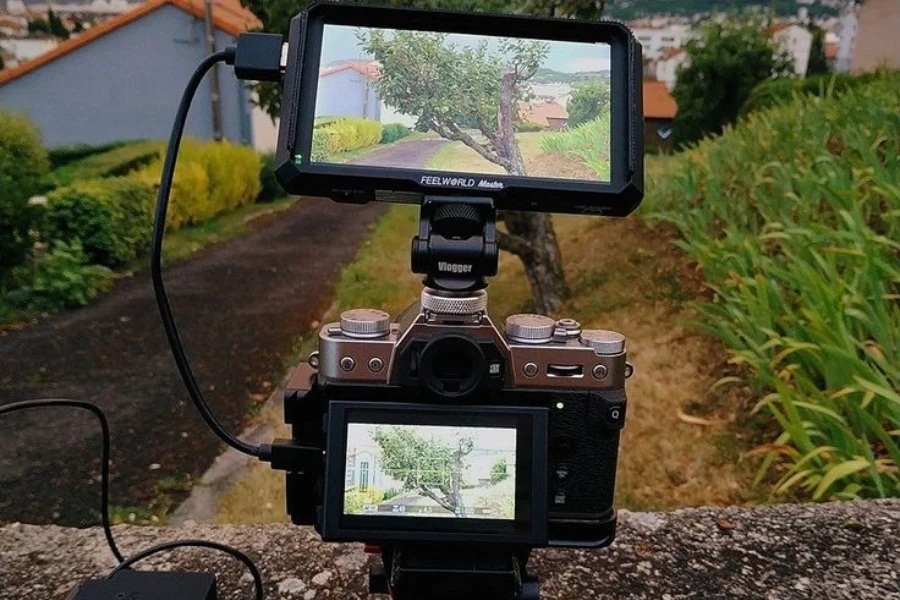
Comparison and rankings
An objective analysis of this year’s models reveals a diverse landscape, where each camera serves a unique niche. Rankings are based on several factors, including image quality, usability, feature set, and price. While the top-tier models offer unparalleled quality and control, the best value for money often comes from mid-range options that strike an excellent balance between performance and affordability.
In deciding which models to stock, it’s crucial to consider the target audience’s preferences and needs. The amateur market shows a clear preference for ease of use and quick sharing capabilities, whereas professionals prioritize quality, durability, and depth of features.
2024 has proven to be a landmark year in the video camera industry, with each model offering a glimpse into the future of videography. As technology continues to advance, the possibilities seem endless, promising even more exciting developments in the years to come.
4. Expert advice for choosing the right video cameras
Selecting the ideal video camera inventory involves more than just stocking the latest models; it requires a nuanced understanding of customer needs, market trends, and technological advancements. By considering these factors, businesses can curate a selection that not only meets the current demand but also positions them as leaders in the market.

Assessing customer needs and preferences
Understanding the target market is the first step in curating a selection that resonates with consumers. Different segments have varying requirements; for instance, casual users may prioritize ease of use and portability, while professionals might look for high-end features like 4K or 8K recording and advanced stabilization. Surveys, customer feedback, and market analysis play a crucial role in identifying these preferences, enabling businesses to tailor their offerings accordingly. Additionally, recognizing the growing interest in content creation for social media can guide the selection towards cameras with features like live streaming and vertical video support.
Balancing quality and price
Finding the sweet spot between quality and affordability is key to attracting a broad customer base. While high-quality video cameras are a significant investment, offering a range of options that cater to various budget levels ensures that no potential customer is alienated. Value for money becomes a decisive factor here; products that offer the best combination of features, performance, and cost will stand out. This approach not only appeals to a wider audience but also establishes the business as a go-to source for reliable recommendations and quality products.
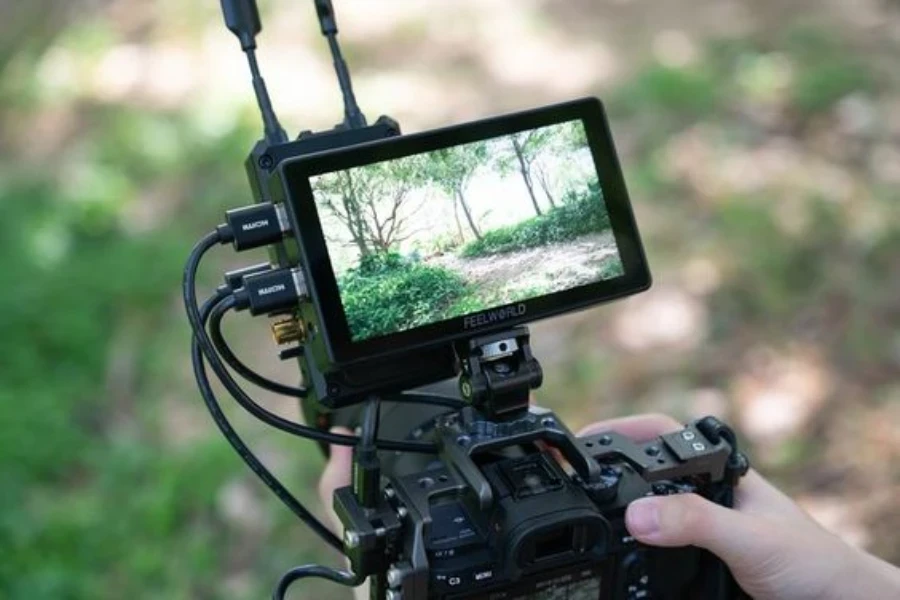
Staying ahead with emerging technologies
The rapid pace of technological innovation in the video camera industry presents both a challenge and an opportunity. Staying informed about the latest advancements allows businesses to keep their inventory current and competitive. Emerging technologies like AI-driven features, cloud integration, and eco-friendly models are becoming increasingly important to consumers. By anticipating these trends and adapting the product selection accordingly, businesses can not only meet the current demand but also future-proof their offerings.
By meticulously assessing customer needs, balancing quality with price, and staying abreast of technological advancements, businesses can expertly navigate the complex landscape of the video camera market. This strategic approach not only enhances customer satisfaction but also positions the business as a trusted authority in the industry, ready to meet the evolving demands of videography enthusiasts and professionals alike.
Conclusion
Navigating the video camera market in 2024 requires a blend of keen insight into consumer preferences, a thorough understanding of technological advancements, and a strategic approach to balancing quality with affordability. By focusing on these key areas, businesses are better equipped to curate a selection that resonates with both amateur videographers and professionals. The dynamic landscape of video cameras, influenced by emerging technologies and the ever-growing demand for content creation tools, presents an opportunity for businesses to differentiate themselves. Leveraging these insights for strategic buying decisions empowers businesses to meet the evolving needs of their customers, ensuring they remain at the forefront of the industry.




